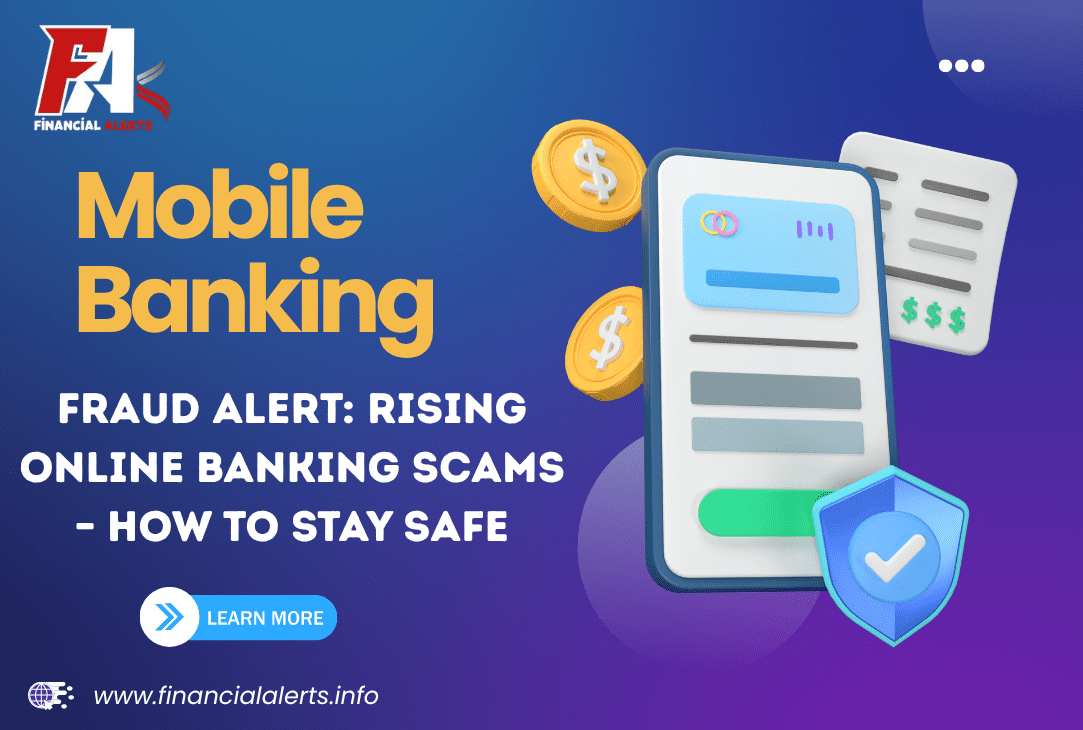In today’s digital world, Online Banking, Net Banking, and Mobile Banking have made our lives easier. We can transfer money, check our balance, pay bills, and even apply for loans from our phones or laptops. But with this convenience comes risk — online banking fraud is rising every day.
Cybercriminals are using new and clever tricks to steal your money. They target your mobile, email, or even banking apps. That’s why it’s important to stay alert and protect your banking details.
✅ What Are Online Banking Scams?
Online banking scams are tricks used by fraudsters to steal your money or personal information. These scams can happen through:
- Fake calls or SMS
- Phishing emails
- Unofficial banking apps or websites
- Malware installed on your phone
Their goal is simple: get your bank account login, OTP, or debit/credit card details to transfer money from your account.
⚠️ Common Types of Online Banking Scams
Here are some of the most common online banking frauds happening today:
1. Phishing Emails or Messages
You get an email or SMS that looks like it’s from your bank. It may say your account is blocked or there’s suspicious activity. It asks you to click a link to verify your details.
Warning: That link is fake! It leads to a site that looks like your bank’s site but is designed to steal your details.
2. Fake Banking Apps
Some scammers create fake versions of official banking or Mobile Banking apps. If you install them, they can access your contacts, messages, and banking info.
3. KYC Scam Calls
You may get a call saying your KYC (Know Your Customer) needs to be updated. The caller asks you to share your Aadhaar number, PAN card, or bank login.
Don’t do it. No real bank will ask for sensitive info over the phone.
4. Remote Access Apps
Fraudsters ask you to install apps like AnyDesk or TeamViewer. Once installed, they can control your phone remotely and steal your money.
5. Fake Loan Offers
Scammers send messages offering personal loans at low interest rates. They ask for processing fees or your Net Banking login details.
Banks never ask for money before approving a loan.

💡 How to Stay Safe From Online Banking Frauds
Here are some easy tips you can follow to protect yourself:
✔ Use Official Apps and Websites Only
Always download Mobile Banking apps from Google Play Store or Apple App Store. Check the developer name. Use your bank’s official website for Net Banking.
✔ Do Not Share OTPs or Passwords
Your OTP is only for you. Never share it with anyone — not even with someone claiming to be from your bank.
✔ Be Cautious With Links
Don’t click on links in suspicious emails or messages. Banks don’t send links asking for login details.
✔ Set Strong Passwords
Use strong, unique passwords for your Online Banking or Net Banking. Change them regularly.
✔ Turn on App Lock and Two-Factor Authentication
Secure your banking apps with a PIN, fingerprint, or face unlock. Enable two-step verification if available.
✔ Use Secure Internet
Avoid using public Wi-Fi for banking. Always do online transactions over a secured network.
✔ Don’t Install Unknown Apps
Apps that offer cashback, discounts, or claim to boost Bank Interest Rate can be scams. Stay away from unknown apps or links.
🏦 What Are Banks Doing to Protect You?
Banks are aware of these scams and are taking steps to secure your accounts:
- 24×7 fraud monitoring teams
- Alerts for every transaction
- Strong encryption for Mobile Banking and Net Banking
- Multi-layered authentication (OTP, device ID, etc.)
- Automatic logout after inactivity
- SMS/email warnings for suspicious activity
Still, they need your help. User awareness is the best security.
🆘 What to Do If You’re a Victim of Online Fraud?
If you think you’ve been scammed, follow these steps immediately:
- Call Your Bank’s Customer Care – Block your card and freeze your account if needed.
- Report to Cyber Crime – Go to https://cybercrime.gov.in or call 1930.
- Change All Passwords – For your Net Banking, emails, UPI apps, and others.
- Keep Records – Take screenshots of messages, transactions, or emails related to the fraud.
Act fast – the quicker you report, the higher the chance of recovering your money.

📊 A Quick Look: Bank Interest Rate Scams
Another trick used by fraudsters is Bank Interest Rate frauds. You may receive fake messages claiming:
- “New FD rates up to 9.5% – Click here to invest”
- “Government-approved savings plan – High returns, limited seats”
Such messages usually link to fake websites where they ask for your account info or payment.
Always check the latest bank interest rates on official bank websites.
📱 Online Banking Is Safe – If You Stay Smart
When used properly, mobile banking, net banking, and online banking are quick and safe. These programs make it easier to track money, avoid lines, and save time. However, you must secure your digital environment just like you lock your house when you leave.
Here’s a quick recap to stay protected:
- Never share OTPs, passwords, or card details.
- Use official apps only.
- Avoid public Wi-Fi for banking.
- Watch out for fake messages or calls.
- Report suspicious activity quickly.
🔚 Conclusion
Customers benefit greatly from the banking industry’s digital revolution. Everything is at your fingertips with Net Banking and Mobile Banking, but there is also a risk. Although scammers are intelligent, you are not.
Keep yourself informed, keep alert and safeguard the money you have worked so hard for. Never forget that your bank will never request your OTP or password. It is fake if someone does.

I am a digital marketing executive as well as content writer in the banking blogs. My goal is to provide simple, interesting and reliable information to readers through my articles so that they always stay updated with the world of banking.




1whewk